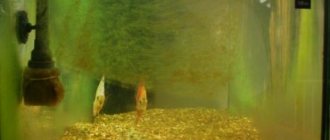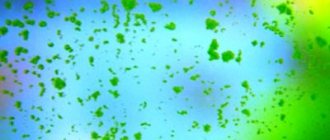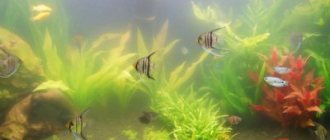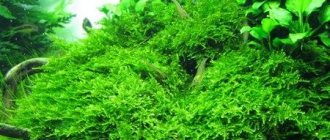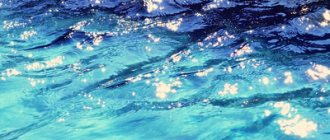03/12/2019Aquarium0
Changing the water in the aquarium is a must to maintain healthy fish. The frequency of the procedure depends on the degree of biological balance established within the transparent reservoir. According to this classification, an aquarium can be new (immediately after launch), young (2-6 months), mature (6-12 months) and old (1 year or more). The approach to replacing water in each case has its own characteristics.
- 1 Equipment and supplies for changing water in an aquarium
- 2 Rules for replacing water
- 3 Launching a new aquarium
- 4 Complete replacement of water in the aquarium
- 5 Partial water change
- 6 Frequency of water changes
- 7 Changing water in a saltwater aquarium
Factors affecting how many times replacement is required
How often you need to change the water in the aquarium is influenced by a number of factors:
Aquarium volume . The larger the displacement, the less often you need to change the water.- Number of fish . The greater the “population density”, the shorter the intervals between procedures.
- Type of fish . For example, bettas are very sensitive to the level of pollution in the aquarium; labyrinth fish feel quite comfortable in muddy water.
- Presence of snails . The more of them, the worse for water quality. Many species clean the walls of the aquarium and the soil, but the volume of their metabolic products is disproportionate to the benefits.
- Presence of algae . If there is “greenery”, fresh water is needed less often (but, of course, within reasonable limits - there is no need to turn the aquarium into an impenetrable “jungle”).
- Filtration and aeration systems . The better they purify the water and saturate it with oxygen, the less often it needs to be changed. The type of filter (biological, mechanical, chemical, combined) is not important.
- Temperature . The warmer the water, the faster it sours, and fresh water is required.
- Feeding regimen . If you overfeed fish, excess food settles to the bottom, begins to rot, and water quality deteriorates faster. The same thing applies if you use not special store-bought food, but, for example, bread crumbs or raw meat.
- The quality of the water itself . Most often, its replacement is required when the content of iron and lime is high.
Useful tips
Changing and preparing water is not such a simple process as it seems at first glance. Beginning fish breeders need to get used to working with simple equipment, as well as develop their “professional intuition.”
Here are some useful tips to help newbie aquarists:
- To ensure that some of the gaseous impurities escape before settling, it is better to draw liquid under high pressure with a shower head. Aeration will also help speed up the sedimentation process.
- If there is still a long time until the next change, but the bottom is dirty, you can use an electric siphon. Such a device passes liquid through itself, collects all the dirt in the garbage container and immediately returns the purified water through the nozzle back into the aquarium.
- Installing a powerful filter of biological, chemical, mechanical or mixed type will increase the interval between water changes.
Be conscientious about your responsibilities as an owner, and your pets will delight you with their beautiful appearance and good health for a long time.
How often, after how many days is it necessary?
The intervals between water replacement procedures depend on the “age” of the ecosystem in the aquarium and a certain stage of its development. There are four of them:
New. Having started the ecosystem from scratch, for 3 months the aquarium (with and without a filter) does not need to be “disturbed” at all, allowing the microclimate to form without outside interference.- Young (3 months to a year). The water is changed once a month (without a filter) or once a month and a half (with a filter) in a volume of maximum 20-25%. If everything is in order with its quality, it is limited to 10%.
- Mature (from one to two years). Water is changed in the same volume, but twice as often. When the fauna and flora feel good, you can “extend” replacing it for another 7-10 days.
- Old (2 or more years). For two months, water (25-30%) is changed every 2 or 3 weeks (with and without a filter, respectively), combining this with thorough cleaning and rinsing of the soil. Then, for 8-10 months, they return to the care regime for a mature aquarium.
The water needs to be changed more often (every 7-10 days) if fish are being treated - the concentration of the drug in the water gradually increases, and it turns into poison.
Main settings
Temperature
The temperature in the aquarium must be constant - any changes are prohibited, especially in winter and summer. Before you find out what kind of water is needed for aquarium fish, you need to study the characteristics of the species composition of your pets.
All types of fish can be divided into three groups:
- relatively cold-loving (goldfish and telescopes) - prefer temperatures of 18-23 °C;
- cold- and heat-resistant - prefer the “golden mean” (22-26 °C), most Families belong to this group;
- heat-loving (discus, labyrinth) – 27-31 °C.
It is important to accurately measure the temperature of the water before changing and to heat or cool it before adding it to the reservoir. A difference of 2-3 °C is acceptable for unpretentious fish, and 1-2 °C for heat-loving fish.
Acidity
If we follow the methodology that came to us from chemistry, then pH (hydrogen index) reflects the reaction of the environment - acidic or alkaline. An environment with pH = 7 is considered neutral. Anything lower is acidic, anything higher is alkaline.
Most often, aquarium inhabitants need a slightly acidic (pH = 6-7) or neutral environment. Only rare species, for example, culya or eels, like slightly alkaline (pH = 7-7.9) liquid.
Cruelty
This indicator characterizes the content of salt ions in water. The greatest influence is exerted by magnesium and calcium salts.
Classification of the environment by hardness:
- very hard (dH index = 0-4);
- soft (dH = 5-8);
- medium (dH = 9-16);
- hard (dH = 17-32);
- very hard (dH 33 and above).
The hardness in the aquarium should be within the standard range of 3-15 units.
Moreover, each inhabitant needs certain conditions:
- shellfish require increased hardness (more than 15) so that calcium is not washed out of the shells;
- viviparous fish feel good at dH = 10;
- for caviar the norm is dH = 7-10;
- for neon – dH = 6;
- Some plants, such as ferns and sagittaria, need a hardness of 10-14 units.
Hardness cannot always be significantly reduced by changing the liquid, so it is recommended to conduct tests and add buffer solutions to the aquarium for pets that need a soft environment.
Consequences of non-compliance with frequency
Why fish will not last long without periodic water changes:
The aquarium inevitably gradually becomes contaminated with organic matter (residues of food, waste products of fauna, dying algae).
All this rots, releasing ammonia, turning into nitrites and nitrates, which are the strongest poisons for fish.- Excess nitrogen compounds in water provokes abnormally rapid growth of algae.
It becomes uncomfortable for fish to live in such an aquarium. The light does not reach the bottom, the water temperature rises. Taken together, these are very favorable conditions for the development of pathogenic microflora. And if you consider that the fish already have a weakened immune system, they definitely will not survive the “epidemic”. - Acids are washed out of the pebbles and sand at the bottom of the aquarium. The minerals contained in water participate in their decomposition reaction, maintaining a normal acid-base balance. As water ages, the concentration of minerals in water decreases and its overall acidity increases. This also threatens the lives of fish.
Periodically updating the water in the aquarium is the only way to get rid of nitrogen compounds. Neither filters, nor plants, nor colonies of beneficial bacteria, nor chemicals provide the desired effect.
How to determine that an urgent replacement is needed?
Sometimes the warning signs are obvious:
yellowed, green, cloudy water;- algae proliferation at an unnaturally fast pace;
- mucus on the walls, rocks at the bottom, other decorative elements, the surface of the water;
- “blooming” of water;
- visual symptoms, other manifestations of pain in fish.
But often, during an external inspection, it is impossible to determine that the quality of water has deteriorated. In this case, it is necessary to conduct a rapid analysis using a test. Strips of paper soaked in reagents and tables for deciphering the results are sold in any aquarium store.
You just need to put it in water and wait as long as indicated in the instructions until it changes color . The resulting shade allows you to accurately judge the acid-base balance of water and the concentration of nitrates.
Critical indicators when it is no longer possible to pull are, respectively, a deviation of 0.2 pH in any direction from normal (6.8-7.2) and 40 mg/kg.
Which liquid to choose and how to prepare it?
Tap water straight from the tap is dangerous for fish for two reasons: it contains chlorine and fluorine compounds that are toxic to them, as well as oxygen bubbles that provoke gas embolism (in the vast majority of cases, fish die from this disease). But subject to preliminary preparation, it is quite acceptable.
not suitable for fish :
- rain, because it contains a lot of foreign impurities;
- filtered (except for those that have gone through a carbon filter or mechanical cleaning), because If the filtration system provides for saturation with silver ions, antibacterial, remineralizing, ion exchange purification, such water is no longer suitable for fish.
Water from open reservoirs, which are sources of centralized water supply, is also suitable, but it requires “two-stage” preparation. It is first boiled, getting rid of all pathogenic microflora.
Most often, aquarists, in order to turn tap water into something suitable for fish, defend it. The period varies from 2-3 to 12-15 days. This depends on the water quality in a particular region. Don't rush too much, it's better to wait longer.
Any chemically neutral container is suitable for settling - glass, plastic, enameled . After pouring water, be sure to cover it so that dust and dirt do not get inside.
The settled water is carefully poured into the aquarium, trying not to “disturb” the sediment that has collected at the bottom in the form of whitish or grayish flakes. Before this, a test must be carried out to determine the acid-base balance and hardness.
Alternative preparation methods:
- boiling;
- freezing;
- ultraviolet sterilization;
- use of special air conditioners.
However, aquarists still prefer to use them as auxiliary ones. They consider settling of water to be the most effective method.
The effect of changing water on fish
Every time after adding liquid devoid of organic matter, the fish experience stress. They may also become very scared. Gradually, your pets will no longer be afraid of the hoses and siphon funnel, so they may also get caught in the “whirlpool”. Below we will consider other reasons that affect fish during replacement.
Reduced nitrate levels
Nitrates, nitrites and ammonia are three stages of oxidation of organic matter to the simplest mineral substances. Nitrogenous substances are very dangerous for all living things. Even the most unpretentious fish eventually develop nitrate poisoning, leading to chronic illness and death. Nitrates and nitrites, when the concentration is slightly exceeded, are addictive. For this reason, newly acquired fish suddenly die in a common aquarium - due to acute nitrate poisoning.
Regular water changes help remove excess nitrate ions, which reduces the risk of poisoning and death of fish and crustaceans. Plants, with an increase in nitrogen compounds in water, begin to actively develop unnaturally. There is also rapid growth of cyanobacteria colonies.
pH stabilization
Fresh water contains few ions, and therefore leads to an initial deviation in pH, and then to its gradual approach to the boundary of the normal reaction (pH = 7.0).
At the same time, there is a dependence: the more mineral compounds in the water, the more stable the acidity. That is why special mineral mixtures necessary for the life of aquatic animals and plants must be added to water poor in ions. This will help change the acidity in the direction we need and partially control the further transformation process.
If you change too much
It was already mentioned above that a large amount of water devoid of organic matter leads to the death of beneficial microorganisms. But in severe cases, not only protozoa, but even unpretentious fish can suffer.
The following negative consequences are possible:
- The fish become more aggressive or, conversely, apathetic, begin to get sick and die.
- Shrimp and crabs die immediately.
- Plants shed tender leaves and young shoots.
Changing water greatly changes the basic biological and physicochemical parameters of the environment. This is especially noticeable when taking liquid from a tap, which is very difficult to clean without using a direct and reverse osmosis filter.
Step-by-step instruction
The algorithm of actions varies depending on whether the water is being replaced completely or partially. This is also influenced by its variety - fresh or sea.
Partial and complete in freshwater
To change the water in the aquarium you will need:
- bucket;
- a piece of rubber hose (1.5-2 m in length);
- siphon with “pear”;
- ladle;
- scraper and/or brush.
The algorithm of actions itself includes not only a partial water change, but also cleaning the aquarium:
Remove the decorative elements, rinse with water and table salt or baking soda (a tablespoon per liter), or with a bright pink solution of potassium permanganate, and rub with a brush. Then rinse thoroughly in the water drained from the aquarium.- Use a scraper to wipe off any plaque or mucus on the walls.
- Remove dead and rotting algae. If necessary, trim and thin out the remaining ones.
- “Siphon” the substrate at the bottom, getting rid of organic and other waste. At the same time, the required volume of water is pumped out. If this is not enough, pump it out with a hose.
- “Replenish losses” by adding clean water. This should be done in small portions, without raising the suspension.
A complete water change is, in fact, a “launch” of the entire ecosystem anew. Additionally you will need:
- a plastic glass or ladle and containers for the temporary resettlement of fish, other aquarium fauna and flora (basin, jar, smaller aquarium),
- container for soil (if you do not plan to purchase a new one).
The water in them should correspond to the maximum with that in which they were before. If there are a lot of fish, you will also have to take care of filtration and aeration of the “jig tank”.
A complete replacement is carried out according to the following instructions:
- Carefully “scoop up” the fish along with the water, immerse the glass in a new container, allowing them to swim out on their own.
- Use a hose to drain the water.
Remove all plants and transfer to another container. Algae are quite fragile, their stems and roots are easy to break.- Remove all decorative elements. Rinse as described above (but only in clean water), and rinse with boiling water to disinfect.
- Remove the filter and compressor from the aquarium and carry out mechanical cleaning.
- Remove soil from the bottom, also rinse and disinfect. Many aquarists prefer to change the substrate when completely changing the water.
- Wipe the walls and bottom thoroughly with a clean cloth soaked in water or a pale pink solution of potassium permanganate.
- Place new soil on the bottom and add decorations.
- Carefully pour in fresh water, trying to raise as little turbidity as possible.
- “Plant” algae.
- Return the fish to their place (in the same way they were removed from the aquarium).
Experienced aquarists, after completely changing the water in the aquarium, recommend waiting 2-3 days for the fish to return “home”.
With sea water
The water in such an aquarium, regardless of its volume and “age,” is changed either by 10% weekly, or by 25% twice a month, or by 40-50% every 4-6 weeks .
In any case, it must be purchased in specialized stores and then mixed in a certain proportion with water that has been distilled by reverse osmosis.
The use of tap water instead of distilled water is, in principle, not prohibited, but it must undergo multi-stage purification and enrichment with the necessary minerals. This is not feasible at home.
With regard to the procedure for partial and complete replacement, the algorithm of actions for aquariums with fresh and sea water is similar. The main difficulty in the latter case is precisely preparing suitable water.
How to reduce frequency?
In order to have to change the water in the aquarium less often, you can resort to the following “preventative measures”:
cover it with a lid, preventing dust and dirt from getting inside;- monitor the number of inhabitants, taking into account that different types of fish require different volumes of water for life support (on average about 5 liters);
- pour in as much food as the fish can eat in 3-5 minutes, choose granules rather than flakes;
- carefully monitor the condition of the aquarium, promptly get rid of dead flora and fauna, and prevent foreign objects and substances from getting into it;
- Before placing the substrate, any decorative element, algae in the aquarium, rinse thoroughly and, if possible, disinfect;
- control temperature and light.
Need for settling, which one to pour?
Water for an aquarium must be settled in a container with a wide neck: a bucket, basin, or enamel pan. Zinc and aluminum buckets are not recommended.
Containers for sludge should not be metal, rusty, or made from toxic elements or paints . Plastic buckets are probably the best and easiest type for settling aquarium water.
The longer the water sits, the more correct it is . In general, the time it takes for water to settle is 1 – 7 days.
Next, you need to pour carefully so that the suspension does not fly throughout the entire volume of your jar.
Is it possible to completely abandon these actions?
It is impossible to do without changing the water in the aquarium completely. This is a closed ecosystem, even with powerful and high-quality filters it is impossible to completely get rid of organic waste and nitrogen compounds that are generated almost continuously.
Also, “old” water inevitably changes its acid-base balance and hardness, which can lead to the death of fish.
Modern alternatives to the replacement procedure are UV sterilization of water, special conditioners and filters . But the experience of aquarists shows that they are good only as an addition to it.


